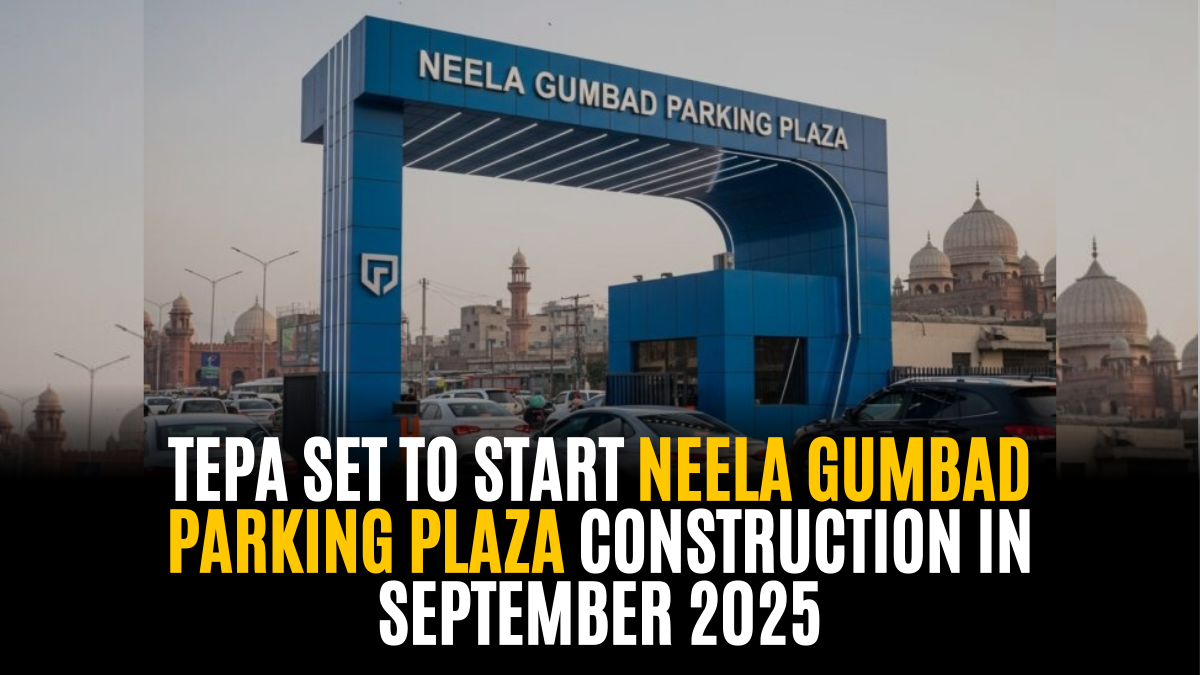The Neela Gumbad Parking Plaza project in Lahore is officially set to break ground in September 2025. Managed by the Traffic Engineering and Transport Planning Agency (TEPA), this underground facility is designed to reduce congestion, improve parking facilities, and enhance the city’s overall infrastructure while preserving its cultural heritage.
Key Features of Neela Gumbad Parking Plaza
The Neela Gumbad Parking Plaza is a three-level underground facility spread over 16 kanals, with an additional level reserved for shops.
- Estimated Cost: Rs 2.24 billion
- Vehicle Capacity: 374 cars and 790 motorcycles
- Facilities: Automated parking system, CCTV surveillance, fire safety equipment, and washrooms
- Trader Support: First-level shops for displaced traders and one-year compensation for losses
- Beautification: Landscaping by the Walled City of Lahore Authority (WCLA)
The Neela Gumbad Parking Plaza is not just about easing congestion—it also aims to modernize parking in Lahore with advanced management systems and improved urban planning.
Expansion of Underground Parking in Lahore
The Neela Gumbad Parking Plaza is the first in a series of underground facilities approved by the Punjab government. Six more plazas are planned in the Walled City, with a combined investment of Rs 31.5 billion. Locations include:
- Mochi Gate
- Sheranwala Gate
- Taxali Gate
- Delhi Gate
- Bhatti Gate
- Shah Alam Gate
Beyond the Neela Gumbad Parking Plaza, an additional 13 parking plazas are proposed at busy locations like Regal Chowk, Town Hall, and Circular Road.
Also Read: Suzuki Swift 2025 – Drive Home Today with UBL Exclusive Offer
Automated Parking Systems
As part of the modernization drive, the Lahore Parking Company is rolling out automated systems at 10 new sites, including the Neela Gumbad Parking Plaza, Mall Road, Children’s Hospital, and Main Market Gulberg. These will feature digital ticketing, handheld devices, and real-time monitoring dashboards.
Heritage Integration and Community Concerns
The Neela Gumbad Parking Plaza is being developed under the vision of the Lahore Authority for Heritage Revival (LAHR), which emphasizes heritage-friendly infrastructure. The project will help preserve Lahore’s historic character while providing modern urban facilities.
However, business groups have expressed concerns about shop evictions and economic disruption. Traders estimate that around 7,000 shops could be affected citywide, impacting business activity worth nearly Rs 5 trillion.
Conclusion
The Neela Gumbad Parking Plaza marks the beginning of a transformative urban strategy for Lahore. With underground plazas, automated parking, and heritage-focused design, the city is moving toward smarter, more sustainable infrastructure. If executed successfully, this initiative will ease congestion and strengthen Lahore’s identity as both a historic and modern metropolis.




Join The Discussion